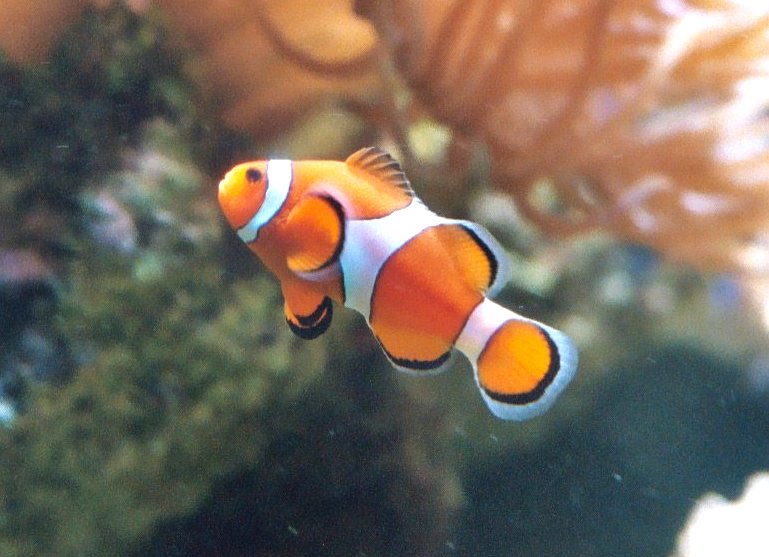

Amphiprion ocellaris
False-clown anemonefish are found in the Red Sea, Indian Ocean, Australia, Indonesia, and many of the western Pacific islands, all the way north to Japan. They form a symbiotic relationship with sea anemones, the tentacles of which have stinging cells that usually discharge and paralyze fish that happen to brush against them. False-clown anemonefish, however, seem to have some biochemical mechanism that protects them, so they hide in the anemone when threatened by predators. In "return", they groom their anemone host, cleaning it from parasites and debris. Each anemone is "private" to each false-clown that lives in it: other false-clowns can be stung by the anemone, if they do not live in it. If a false-clown is removed from its anemone for a period longer than a few days, or weeks, and is then brought back again, it is stung by the anemone. However, it will return repeatedly, going through a stereotyped swimming dance, letting its ventral fins to be stung first, then its entire belly, until it acquires full immunity to the anemone's sting and makes it its home.
False-clown anemonefish have the ability to change their sex, from male to female. Usually there is a dominant female that lives in the anemone and lays her eggs there, or nearby. All newborn false-clowns are born male, with dormant female reproductive organs. If the female dies, a dominant male will change into a female, and its position will be taken by a non-dominant male.
This fish is the character "Nemo", in the movie "Finding Nemo" (2003). The picture was taken in the Chicago Aquarium, in August 2004.
Genus Amphiprion
Family Pomacentridae
Superfamily Percoidae
Suborder Percoidei
Order Perciformes
Subclass Actinopterygii
Class Osteichthyes
Subphylum Vertebrata
Phylum Chordata
Kingdom Animalia
Life on Earth
Index